Byzantine weights. A few examples.
Byzantine weights are common and come in many shapes and designs. Some are very simple with only the denomination inscribed and some are elaborate with artistic Christian designs.
There are two different common Byzantine-weight standards. For one standard, denominations are based on the weight of the gold solidus (nomisma). For the other, denominations are in Byzantine ounces with 12 ounces to a pound. (Hendin has examples of a third weight standard based on the scripulum of c. 1.05-1.18 grams.)
Many solidus weights are marked "N" for "nomisma" which means simply "gold coin." The gold solidus was precisely maintained at 4.45 grams for hundreds of years and I do not know why so many solidus weights weigh so little, often close to 4.3 grams or less. Even late Roman weights with the words "Exagium solidus" ("the exact amount of a solidus" [translated by google]) on them usually weigh much less than a solidus. I am seeking the explanation. Let me know if you know, or even if you just have ideas.
 .
.
The Roman pound was c. 324 grams (Some scholars think it is 327 grams.) 324 grams/12 ounces = 27.0 grams per ounce. The weight of the pound declined gradually over the centuries. It was probably 320 grams or less in Byzantine times. 320/12 = 26.7 grams per ounce.
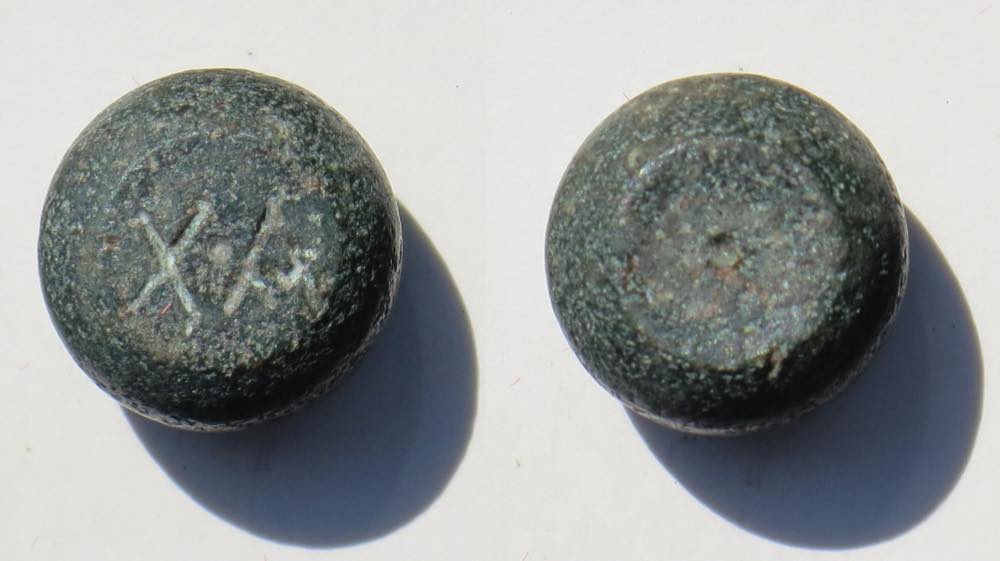 A Byzantine weight marked "one ounce". The X-like symbol (which usually has a loop connecting the bottom of the X) is for ounce and "A" is "one" in Greek.
A Byzantine weight marked "one ounce". The X-like symbol (which usually has a loop connecting the bottom of the X) is for ounce and "A" is "one" in Greek.
26.92 grams. This weight has a squat barrel shape, 14 mm high and 18 mm wide.
(26.92 x 12 = 323 grams/pound.)
Ref: Bendall, Byzantine Weights, 33 (26.40 grams = 316.8 grams/pound).
Hendin 332 (27.25 grams.)
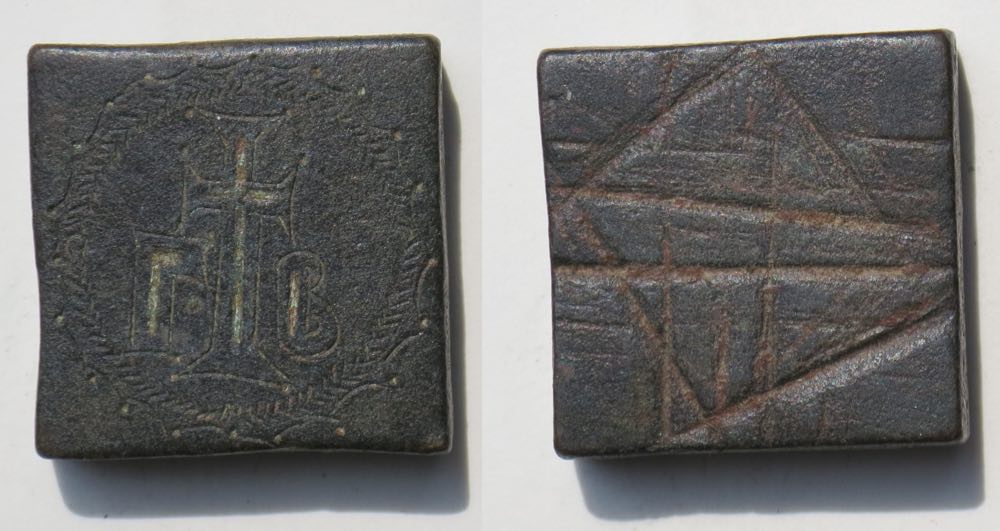 A Byzantine two-ounce weight.
A Byzantine two-ounce weight.
53.17 grams. (319.0 grams/pound and 26.59 grams/ounce)
28 mm square and 7 mm thick.
Γ B either side of a long cross, inside a wreath.
The "Γ" is a Byzantine symbol for "ounce" and "B" is "2".
Ref: Bendall, Byzantine Weights, 71-73 (only #73 has its weight given: 52.50 grams (315 grams/pound and 26.25 grams/ounce).
Hendin 382 (53.37 grams) 384 (52.65 grams)
The gouges across the reverse may have been intended to lower the mass of the weight. The weight might have been too heavy when made and adjusted downward.
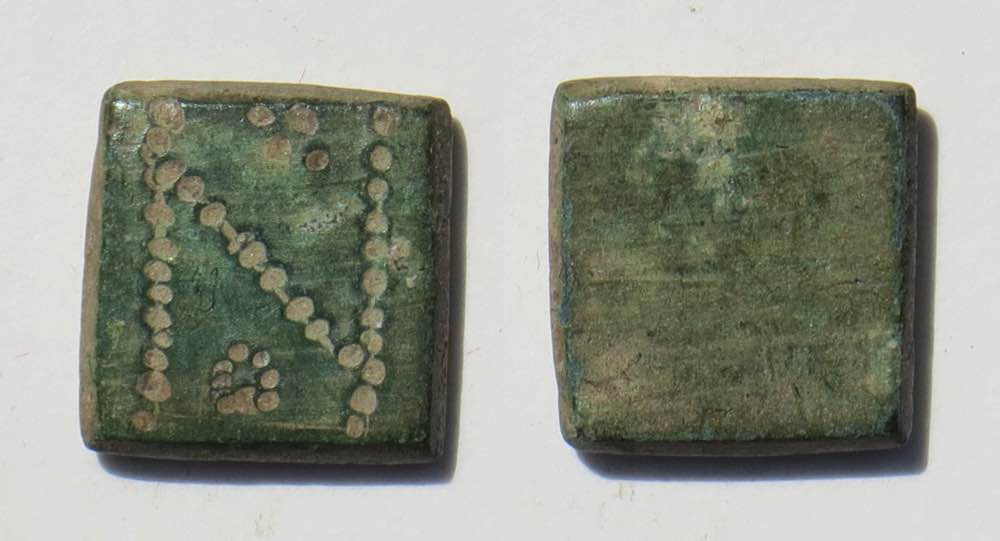 A Byzantine weight marked "N" for "nomisma" for "one solidus".
A Byzantine weight marked "N" for "nomisma" for "one solidus".
4.29 grams. 15 x 14 mm.
This weight, and many other similar weights, is too light. Some scholars have said these were the minimum acceptable weights for a solidus. Personally, I doubt this. I think the value of 0.1 grams or 0.2 grams of missing gold was too much to overlook. (As I write, the modern value of 0.2 grams of gold is slightly more than $20.)
Ref: Bendall, Byzantine Weights, 103, 104 (4.11 and 3.84 grams).
Hendin 349 (4.54 grams), 352 (4.24 grams), 356 (4.00 grams)
I solicit explanations from readers. 
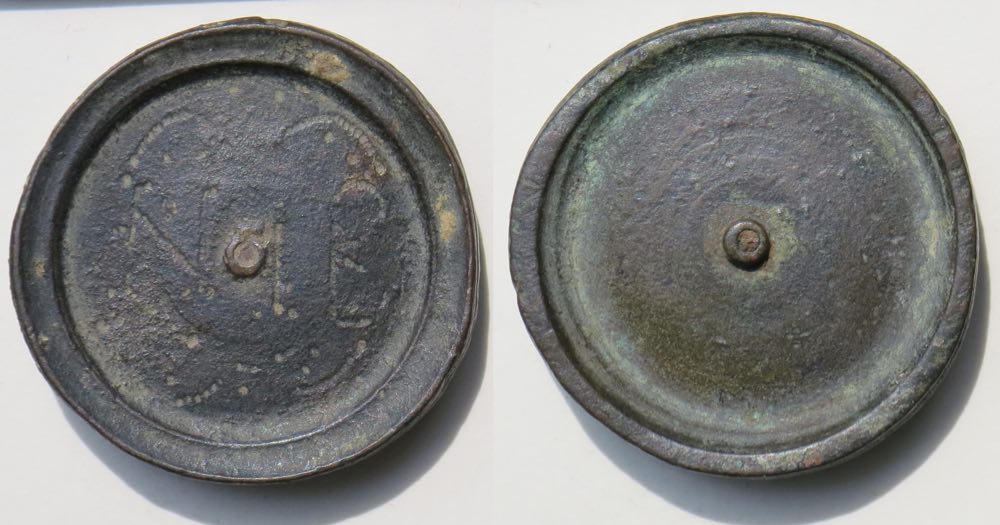 A Byzantine weight marked "N IB" for "12 nomismata".
A Byzantine weight marked "N IB" for "12 nomismata".
54.17 grams. (4.51 grams/nomisma)
38 mm wide by 7 mm maximum thickness (the rim is above the field)
This seems to be a bit heavy with an weight per solidus slightly above the usual weight of a solidus.
Ref: Bendall, Byzantine Weights, 134-135 (52.65 and 51.83 grams. Those would be 4.39 and 4.32 grams/nomisma).
Hendin --.
References:
Bendall, Simon. Byzantine Weights: An Introduction. 68 pages. Paperback pamphlet. [This work does not consider Islamic polyhedral weights.]
Hendin, David. Ancient Scale Weights. 2007. Hardcover. 239 pages. Byzantine weights are on pages 209-224, with 84 examples. Polyhedral Islamic weights are on pages 225-233, #411-457. [Almost all of his information on polyhedral weights cites Holland, but Hendin has other shapes, too.]
 .
. A Byzantine weight marked "one ounce". The X-like symbol (which usually has a loop connecting the bottom of the X) is for ounce and "A" is "one" in Greek.
A Byzantine weight marked "one ounce". The X-like symbol (which usually has a loop connecting the bottom of the X) is for ounce and "A" is "one" in Greek. A Byzantine two-ounce weight.
A Byzantine two-ounce weight.  A Byzantine weight marked "N" for "nomisma" for "one solidus".
A Byzantine weight marked "N" for "nomisma" for "one solidus". 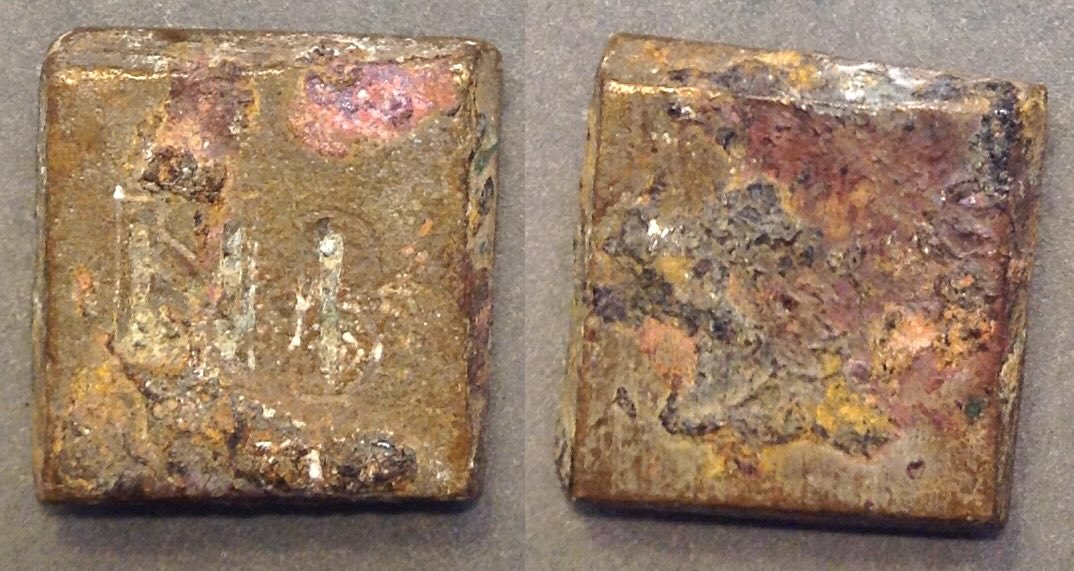 A Byzantine weight marked "N B" for two nomismata.
A Byzantine weight marked "N B" for two nomismata. 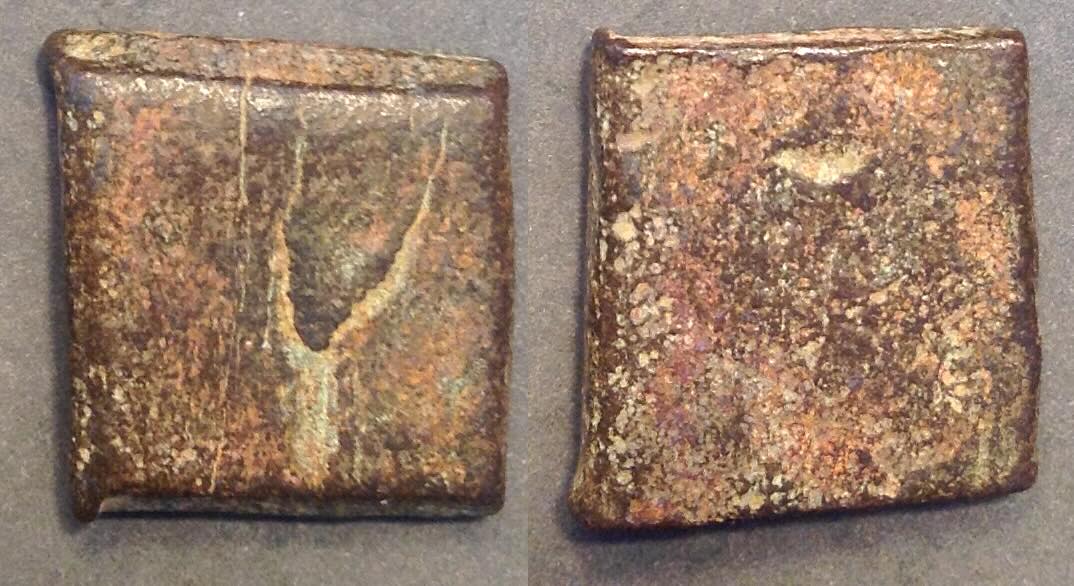
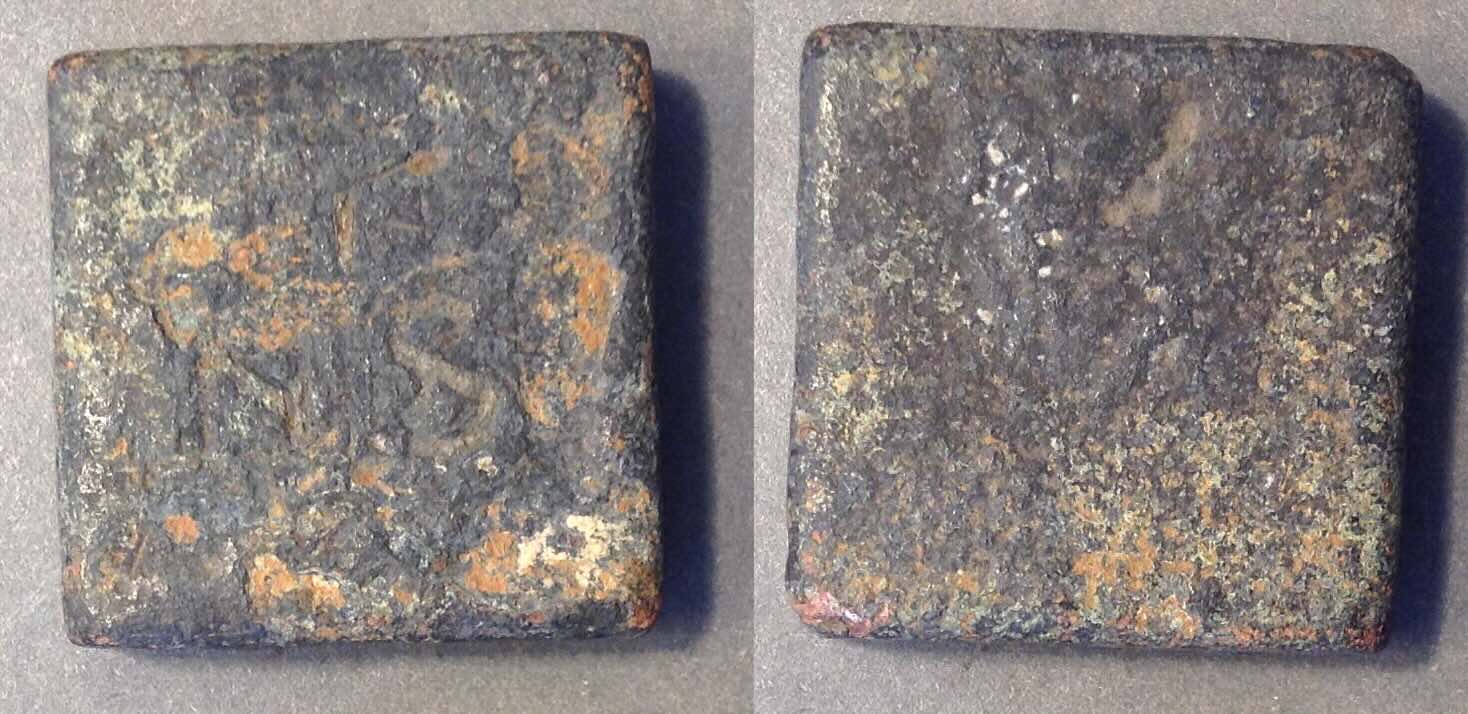 A Byzantine weight marked "N S" for six nomismata, with a cross above.
A Byzantine weight marked "N S" for six nomismata, with a cross above.  A Byzantine weight marked "N IB" for "12 nomismata".
A Byzantine weight marked "N IB" for "12 nomismata".